#Av8r
Explore tagged Tumblr posts
Text
Xbox Adaptive Controller Hub
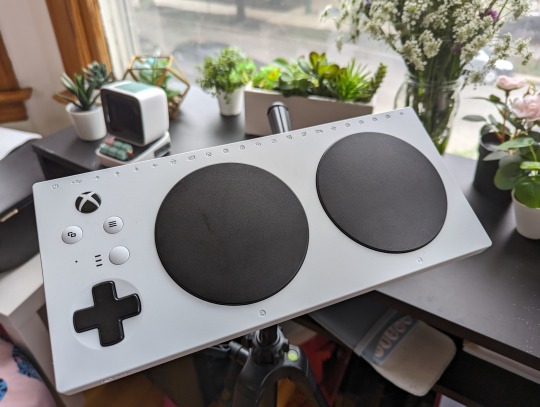
A dedicated page for information on the Xbox Adaptive Controller. Continuously updated. A more detailed breakdown is available past the jump.
Useful links:
Video guides to using the XAC by the MS Gaming Accessibility Team: Detailed visual breakdown on how to use the various XAC features, easier to parse and find info than the dedicated support pages.
Xbox Adaptive Controller Input Device Specifications: Specs on how exactly the ports on the XAC are wired, what inputs are supported, and how they connect to TRS and TRRS connectors. Useful for making custom switches/potentiometer based devices for the XAC.
OVERVIEW The Xbox Adaptive Controller is essentially a hub for pairing multiple input devices into a which output as a regular Xbox controller. The advantage of this is more flexibility in what devices and games you can connect to, without a reliance on separate software.

For example, you could use the USB inputs on the side to attach joysticks to emulate each analog stick, with other individual buttons controller by various other styles and sizes of switch.
Because this is a hardware solution, it can also be used on various other platforms by using converters. For example, you could use a Mayflash Magic S adapter to play on Switch or PS4.
The various 3.5mm jacks on the back also correspond to various inputs, so they can be switched on the fly by simply plugging them into a different port. Each of these ports can also be reassigned using the Xbox Accessories app on Windows or Xbox, and up to three profiles saved to the controller itself--not including the default, unchanged profile.
USB Port Mappings
There are two USB ports, one on either side, and which one you plug a controller into will decide which analog stick it is mapped to, and what the corresponding buttons do. Controllers must be D-Input/HID joystick protocol, meaning no Xbox controllers or controllers reading as x-input are supported. PS4 devices are also generally not supported, though if it has a PS3 compatibility option that may work.
The first 8 assigned buttons will be mapped automatically. These buttons can be remapped, but there will be some overlap on each USB port, and the available buttons CANNOT be reassigned. You'll want to know which buttons are available beforehand. Directional hatswitches/dpads will also not be assigned, unless they read as individual buttons.
The default mappings are show below.


You can see that each side shares the X1, X2, Menu, and View buttons, though with each flipping the 1,2 and 7,8 assignments.
NOTE: Reassigning the Menu and View buttons will NOT reassign the corresponding buttons on the XAC unit itself. So if you're ok accessing those buttons through the hub you can essentially treat those as two extra wild card buttons (X1 and X2 are the other wild cards).
Supported USB Controllers:
A list of controllers I've personally found to work with the XAC.
-8bitdo Lite 2: left analog, face buttons and shoulder buttons available. Triggers unmapped. (8Bitdo Lite does not work).
-Brook Fightboard PCBs: XB Fighting Board not compatible. PS4 compatible PCBs can be used by assigning the directions to Left Stick and making sure it boots up in PS3 mode.
-GP2040ce Advanced Breakout Board. Can be used by assigning the directions to Left Stick and making sure it boots up in Dinput mode.
-Logitech X52 HOTAS: analog axis, trigger, pinky and top buttons, as well as T1/T2 buttons detected. No twist axis or hat switches. Must be plugged into throttle to function, but no buttons or axes on the throttle are detected.
-Saitek AV8R-01 HOTAS PS3 Edition: analog axis, trigger, top buttons as well as T1-4 detected. No twist axis or hat switches.
-Thrustmaster T16000 HOTAS: analog axis, trigger, top buttons as well as the top button row on the left side, and rightmost button on the row below are detected. Function buttons can be switched by toggling the left/right handed switch on the bottom of the stick.
2 notes
·
View notes
Video
youtube
DURAFLY TUNDRA V3 RADIO,RATES,CG AND RANT ON MY CHANNEL by FGFRC Here is a great channel to check out Model AV8R : https://www.youtube.com/@ModelAV8RChannel
0 notes
Text


Had a study session with an instrument student today. 😊 got to cover some things like weather, navigation systems, engine systems and much more! I always learn more when I teach the material.
#aviation#airplanes#pilot#airplane#av8r#aviationblogger#clouds#avgeek#aviation blog#be kind to yourself#ground instructor#teaching#instructing
4 notes
·
View notes
Photo

Happy 31st birthday to me! 😅 #EditorOfJznsn2uPhotography #AV8R #Jznsn2u https://www.instagram.com/p/Cgj-Hdrr1Py/?igshid=NGJjMDIxMWI=
0 notes
Photo
Love love love ❤️


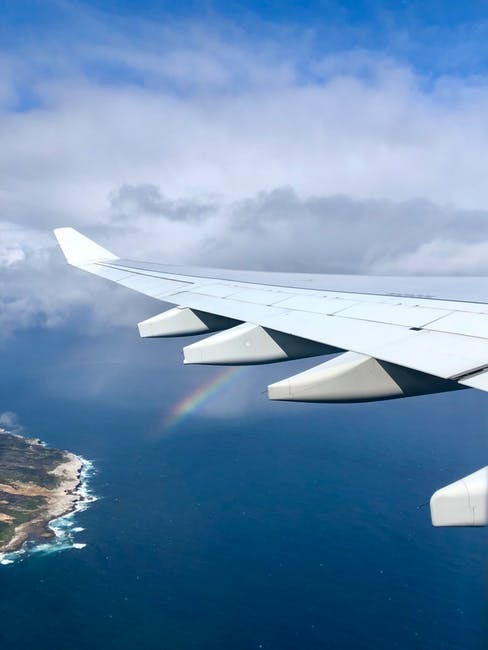







#flying#airplane#sky#clouds#landscape#photography#photooftheday#nature#paradise#adventure#fly#plane#explore#travel#indie#hipster#vintage#traveling#traveler#travelling#alternative#goals#aviationlovers#av8r#aviationblogger
6K notes
·
View notes
Photo

The AV8 range - coming soon!🤙😎 👏 Free Shipping Worldwide 📦👍 🌎 Link to store located in Profile Bio 😁 www.iloveahangar.com 👍 #aviationlovers #aircraft #instagramaviation #instaaviation #planespotting #pilotlife #instaplane #aviationgeek #airforce #warbirds #aviators #vansshoes #chucktaylors #vanslovers #av8r https://www.instagram.com/p/B2ZJOkAjzLe/?igshid=7q5wkqffujxq
#aviationlovers#aircraft#instagramaviation#instaaviation#planespotting#pilotlife#instaplane#aviationgeek#airforce#warbirds#aviators#vansshoes#chucktaylors#vanslovers#av8r
0 notes
Photo

Excited to share the latest addition to my #etsy shop: AV8R (Aviator) Mug #housewares #yes #ceramic #aviation #pilot #airplane #aircraft #fly #flying #AV8R #Aviator #Aviationmug https://etsy.me/2I7UxoE https://www.instagram.com/p/BvynQkln7fk/?utm_source=ig_tumblr_share&igshid=7xdp4ui4vr7s
0 notes
Photo
I find this topic very interesting. Last year for research week I prepared and presented my research on how glass cockpits effect basic pilot skills. I actually came in second place for presentation and research! I want to continue my research one day...(maybe next year)

Glass cockpit - All instruments in a screen
Avionics- Glass cockpit
Glass cockpit avionics are a class of avionics, which uses light indications and/or screens to indicate all the parameters and indications needed for the operation of the aircraft. There are numerous aircraft types today flying with glass cockpit configurations, due to the simplicity and user friendlier interfaces.
In early days, glass cockpit use was limited to PFD (Primary Functions Displays), MFD (Multi Function Displays) or a PFD that incorporated MFD functionality. Those early glass cockpits paved the way for ever more complex and advanced avionics driving us now to an almost paperless cockpit. The main reason that such avionics were invented was that the limited space in the cockpit of an aircraft, could not fit all the needed avionics that the pilots needed to have direct access. The typical avionics of the pre-glass cockpit era were bulky heavy and made a total mess with their wires and tubes, practically making the back of the panel/firewall a total jungle of tangled wiry things and labels
Commercial aviation
In commercial aviation simple glass cockpits, were firstly introduced in medium Jets(B734,MD-80,A310,), then fund implications in heavier jets(A300,B744,B672) and business jets. These early glass cockpits were mostly limited in indicating the flight crew with all the vital indications that conventional instruments would do, but in a more suitable way. For example in the case of the air speed indicator in glass cockpits there were now automated needles that moves, let’s say when the pilot retracted the flaps or extended the landing gear to clearly indicate the new operation speed limits of the aircraft in that configuration. Also all autopilot indications and bags were incorporated in the glass cockpit for greater easiness. But the most crucial change was the HSI (The main navigation instrument up to that day), had a meeting with the garbage can. It was totally replaced with an all new design that gave the pilot all the indications that he wanted. Incorporated moving maps with live route-distance-time indications, weather radars, combined HIS and RMI functionality it was the Christmas present that any pilot of that era could have wished.
Hello EICAS, Goodbye flight engineer.
Later came the EICAS system(Engine Indicating and Crew Alerting System), which was very bad news for one particular airman in the cockpit. The flight engineer now could retire or get his hands dirty again in the hangar, since he had no job in the cockpit. EICAS is an integrated system used to provide aircraft crew with aircraft engines and other systems instrumentation and crew annunciations. This system incorporated also annunciator panel with prioritized colored indications and advised solutions, some came with even intergraded checklists. This system clearly offered the aircrew with a powerful toll to cope with any improper indications, simply scanning 1 or 2 screens instead of 1 great and complex flight engineer panel, which needed an independent controller to supervise. The difference can be clearly seen in the case of the Douglas DC10 and the Douglas MD11, which was the first jumbo jet to do without flight engineer.
Everyday pilot get a new file saving tool.
The next step was to find their way to a wider market, and in the crammed cockpits of GA(General Aviation) aircraft. These implications came with many challenges, first and foremost how to fit the computer banks needed in bigger commercial aircraft (We are talking for a whole room) in a very very small panel. Garmin took the challenge and came up with the striking G1000, which is an all round full panel substitute. If you want to retrofit your Cessna 172 to Garmin G1000 you will have to wave goodbye to all your existing instruments, radios, receivers, indicators and the stupid vacuum pump ware. The G1000 has almost no moving parts to have mechanical wear, so no more inop labels on the panelJ. After Garmin came many other companies like Dynon and MGL avionics that are mainly targeting experimental and ULM markets. These days you can buy and have a full glass cockpit panel for your ULM ultralight aircraft with full autopilot and altitude hold, moving maps and synthetic vision for as much as 6000$.
381 notes
·
View notes
Photo

Got to tour the Cirrus factory in Knoxville! More to come soon! posted on Instagram - https://ift.tt/2HsnVFR
0 notes
Photo

✖️Privé Apparel ✖ #Trilateral LS crew x #AV8R SnapBack ❄️ http://PriveApparel.com #ForeverFly in @priveapparel • • • #PriveApparel #cshot #fashion #style #ATL #photography #streetshot #atlanta #landmark #marketing #miami #nyc #hype #money #paris #lax #uk #shotta #style #hiphop #illgrammers #allshots #killeverygram #streetwear #skate #streetstyle #brand (at Atlanta, Georgia)
#trilateral#av8r#money#atl#streetstyle#fashion#streetshot#style#priveapparel#paris#nyc#shotta#brand#marketing#photography#landmark#hiphop#lax#foreverfly#allshots#atlanta#cshot#miami#illgrammers#skate#uk#hype#streetwear#killeverygram
1 note
·
View note
Video
youtube
DURAFLY TUNDRA V3 UNBOX AND BUILD by Fat Guy Flies RC Here is a great channel to check out Model AV8R : https://www.youtube.com/@ModelAV8RChannel
0 notes
Photo
I can’t wait for another Oshkosh!







Around the South 40. Oshkosh 2018
62 notes
·
View notes
Text
6 Things Instrument Training Taught Me
Instrument flight training is an amazing experience. Instrument training makes pilots safer and overall just better. It really enhances the basic pilot skills taught in private training, and sets pilots up for success in commercial training. If you’re going through instrument training, or thinking about it, I highly reccomend it. I have compiled my experiences and advice into one (super long) article... but I hope it is helpful for you!
[This is me immediately after I passed my instrument checkride :) ]
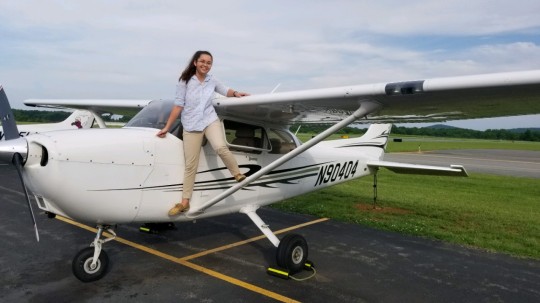
1. Don’t Always Trust Your Gut
We’re often told to trust our guts. If you have a gut feeling about something its probably for a reason (I believe in this 100%). In instrument flying the exact opposite is true. When you’re in the soup its hard to tell up from down, literally. Disorientation is a pilots’ worst enemy.
The human body uses three systems to determine orientation;
1. Vestibular- inner ear organs
2. Somatosensory – nerves in the skin, joints, and muscles that use sensations from gravity
3. Visual – eyes (duh)
These three systems send information to the brain, and when all three systems send matching information there aren’t any problems. Sometimes these systems send information that don’t match one another, this is what causes disorientation. When in VFR conditions the visual system is the dominant source of information to the brain and will override any false information given by the other systems. However, in IMC the visual system is not dominant, because you can’t see the horizon. Without the visual systems ability to override false information from the other systems, a pilot can become disoriented quickly.
I could go into a detailed explanation of the organs of the inner ear to better explain why orientation occurs, but for times sake I won’t. I will, however, provide the picture from the PHAK. Chapter 17 of the PHAK goes into spatial disorientation at a much deeper level and is a great resource for anyone seeking an instrument rating!
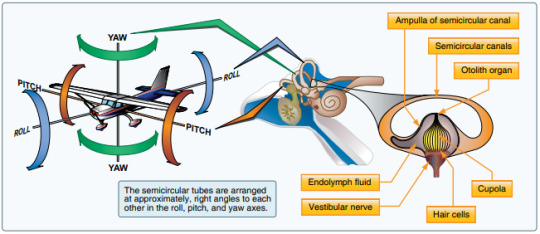
When flying in instrument conditions it is important to trust your instruments. At one point while flying actual, I got this uneasy feeling that I was flying upside down. Luckily, I had another person with me who did not share the sensation. When this happens, it is vital to disregard your feelings and focus on your instruments.
2. “Seat of Your Pants” Flying Just Won’t Cut It
Before I decided to fly airplanes, I did three years of engineering school at East Tennessee State University, so I was a little weird before I ever stepped into a plane. My mind has always been able to grasp concepts when they are super structured, and math based… have you ever read an approach plate? Those things are crazy structured, and I LOVE it! However, with great structure comes great responsibility.

When you’re flying on an IFR flight plan you are essentially signing an agreement with ATC. You are agreeing that you will follow the plan they give you (approach plate/flight plan/charts) and they will provide you with their services. This includes any altitudes and reporting points. There is a very different relationship between pilot and ATC when flying VFR (who cares if you’re 30-50 feet off altitude because you flew over some cool landmark or wanted to see something cool?). Guilty as charged…
This mentality will not cut it when flying IFR. The IFR must be detail oriented and strive for perfection. This leads me to my next point…
3. Strive for Perfection, but Accept its Unattainability
As a pilot you should strive to be as close to perfect as possible, but at the same time remind yourself that it wont always happen. When I first started my instrument training, I went into it with the mindset that this course was going to be the hardest thing I would ever attempt in my flying career. I had heard multiple horror stories from those who came before me, and boy was I terrified!
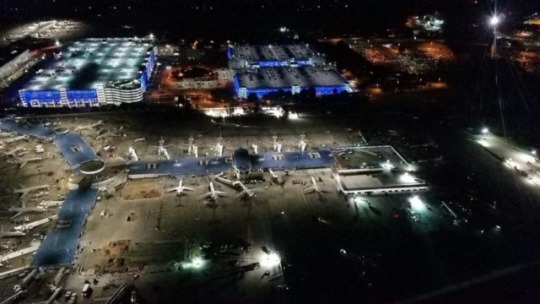
I am VERY type A, and a perfectionist. I am super hard on myself, especially when it comes to flying… so this was the perfect storm for a stress induced mental breakdown (and I had several).
One thing that helped was having a forgiving instructor who didn’t make me feel like an idiot when I made mistakes… although one time he asked me to explain the GPS system and when I finished he looked at me and without so much as a smile said “Everything that just came out of your mouth was wrong”
We don’t talk about that.
One of the biggest pieces of advice I can give in this area is to remind yourself why you’re training. Take breaks when you need them. Don’t stress yourself out so much you develop a drinking problem and end up in rehab (oops).

And most importantly, admit when you’re wrong or don’t know. You can’t fix a problem if you don’t acknowledge that you have a problem.
4. IFR Flight Plans are a Gift from God Himself
Don’t get it twisted, I love VFR flying. Its always fun to not have to talk to anyone on the radios or obsess over altitudes/routes/what ever else. But when you need to get somewhere, an IFR flight plan is going to be your BFF. ATC is made for IFR traffic, and as one of my pilot friends says “when you fly on an IFR flight plan, ATC treats you like a real pilot”. I used to roll my eyes at that (as I often do with cocky know-it-all male pilots) but now I really see the benefits.

For example, one time I was flying to Philly from Lynchburg with an instructor of mine (we were really craving cheesesteaks). The flight up was uneventful. We had filed an IFR flight plan on a VFR day. We did this because of the simplicity and efficiency it provides us on longer cross countries into large airports like Philly. On the way back, full of cheesesteaks and fries and free FBO cookies, we hit some thunderstorms. My instructor had started dozing off next to me, and I kept an eye on the weather as we made our way back down south. I had been going in and out of clouds all day, but we were on an IFR flight plan so it didn’t really matter. I kept an eye on two cells that had started moving dangerously close to our flight path. I called ATC and asked for a diversion around the clouds. ATC surprised me and told me to fly between the two cells. I had a very uneasy feeling in my gut when I was told these instructions. I pulled up the weather on my IPad (our IPads connect to the G-1000 through Bluetooth) and saw that there was only a 3 NM space between the cells… I was in a SkyHawk… no way.
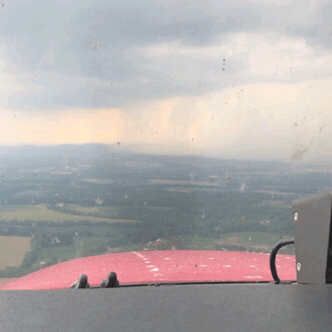
I woke up my instructor and explained the situation and explained that I would have to divert. Long story short, I ended up calling a weather emergency because ATC did NOT want to give us a diversion. We ended up stuck in Frederick Maryland for a few hours. While we were landing (scariest landing of my life) we were being pelted with hail. So all in all, we were fine, but it taught me a valuable lesson about the usefulness of IFR flight plans. It also taught me to know when to stand up to ATC. ATC are people too, and people make mistakes. So if you feel like something isn’t right, speak up.
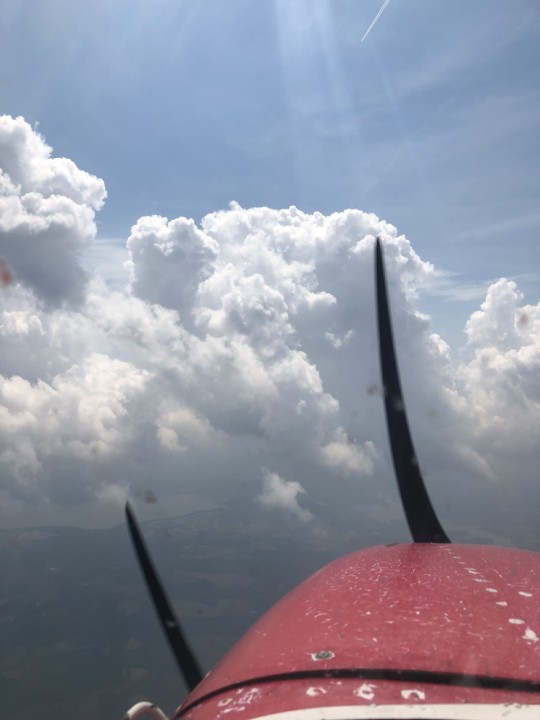
5. Simulators, Simulators, Simulators (and Chair Flying)
I cannot stress enough the importance of simulator practice and chair flying. If you’re lucky enough to have access to simulators, USE THEM! Here at Liberty, we have fancy Frasca FTD5’s for the Skyhawk, Seminole, and even an RJ. We use these a lot during our training! They’re perfect for days where the weather won’t allow us to fly, or even for practicing things such as high-density altitude flight. In one of our courses we have a simulated flight through Colorado where we experience several emergencies, it’s a lot of fun. Another thing Liberty provides its students are tabletop simulators that we can access whenever we want! During instrument training I used these DAILY, I’m not even exaggerating.
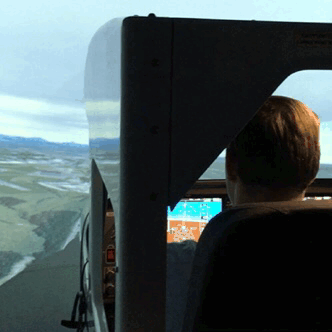
Keep in mind the tabletops aren’t the best simulations, and the control inputs required are not necessarily the same for a real airplane… but they are beyond perfect for learning procedures! One other resource can be found on your Ipad! A lot of pilots have Ipads for ForeFlight, and if you are one of those pilots then you can easily download simulator apps on yours. Personally, I have two Garmin apps. They simulate the G-1000 system and allow me to work on procedures. These apps sometimes cost money, but the less you do in the airplane the more money you save in the long run.
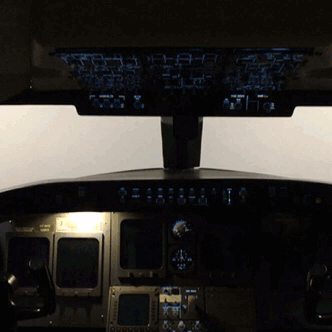
If you don’t have access to simulators, chair fly! Chair flying is the bread and butter for any student pilot. If you sit down before a lesson, or even after a lesson, and walk yourself through the flight you will learn so much and be way more prepared. If you think about it like a movie it makes more sense… The second time you watch a movie you always pick up on things you missed. Chair flying is a lot like that! After you chair fly the lesson, when you do the lesson in the airplane it won’t be the first time you are doing the lesson and you will be able to pick up on more things you would otherwise miss.
6. Get Actual Time
If you read that and asked yourself, “what the heck… isn’t any time in an airplane actual time?” don’t worry… I was also confused when I first started. Actual time is time you can log when you are in actual IFR conditions as opposed to simulated conditions (foggles, bleh).
It is my opinion that the more actual time you get, the better. I would rather be in actual while I still have an instructor with me, than my first time being in actual occurs when I’m all alone (scary stuff). The first time you go into actual, it’s a very strange feeling. You aren’t restricted by the foggles… but you still can’t see the ground. My instructor had to chirp in once in a while and tell me to stop staring at the clouds.
It really is a beautiful sight.
So theres my input on instrument training! Are any of you guys in instrument training/ rated? I hope you found some of this info helpful, and if you have any questions my inbox is always open!
( All of the pictures/ gifs are mine except for the meme and the approach plate {duh} )
Blue skies and tailwinds yall!
#Aviation#aviator#pilot#pilotlife#female pilot#flightinstructor#ground instructor#instrument training#flying#student pilot#advice for pilots#philadelphia#airports#flight instructor problems#clouds#cloudchaser#flight simulator#frasca#simulators#Av8r#runways#airplanes#air traffic controllers#atc#national airspace system
6 notes
·
View notes
Photo
Nothing beats views like these



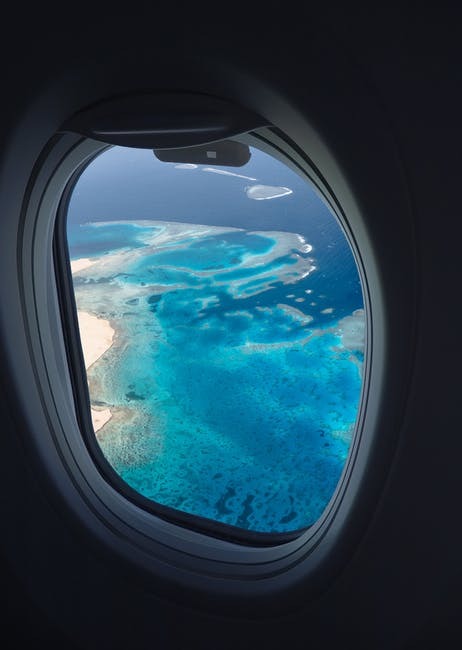




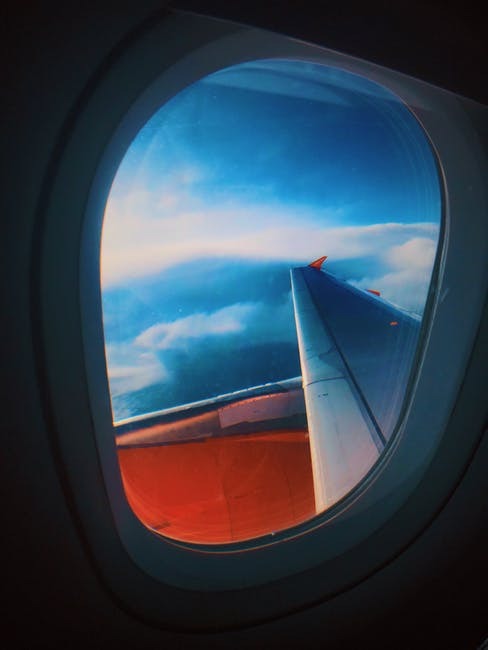
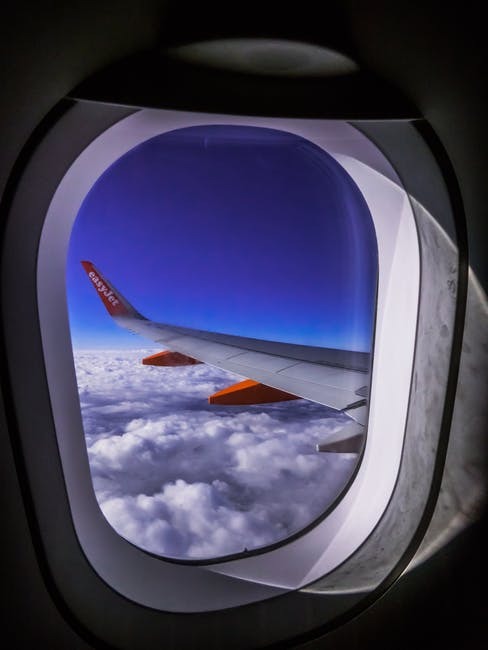
#fly#flying#airplane#plane#clouds#sky#views#travel#traveling#traveler#indie#hipster#vintage#landscape#photography#nature#paradise#adventure#explore#inspiration#motivation#goals#av8r#aviationlovers#aviation#aviationblogger#avgeek
2K notes
·
View notes
Text
2013 Ford Mustang Red Tails
2013 Ford Mustang Red Tails
type=’html’> For the last several years Ford provides partnered up with EAA AirVenture within Oshkosh, WI to auction off one of a kind Mustangs to benefit the EAA Youthful Eagles program. The aviation styles have included the AV8R, the particular AV-X10 Dearborn Doll, the SR-71 Blackbird and last year’s Glowing blue Angels Mustang, all of which have mixed to raise more than $1. 5 for that…

View On WordPress
2 notes
·
View notes
Photo

AV8R (Aviator) Long Sleeve T-Shirt by AeroSteps on Storenvy
https://www.storenvy.com/products/26131182-av8r-aviator-long-sleeve-t-shirt
0 notes